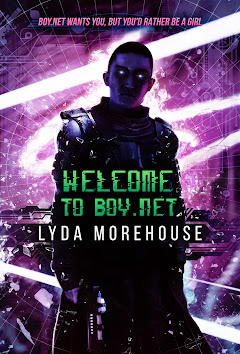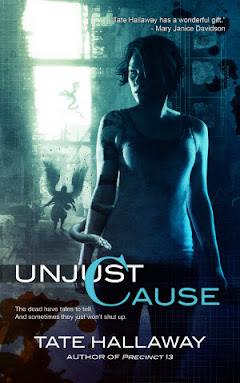Like many families, mine has some odd catch phrases that come from our own shared experiences.
My parents used to always say, "Where are we today, Miles?" when we were driving somewhere and had gotten lost or even as an opening conversation gambit, ala, "How have you been? 'Where are we today, Miles?'" According to them, it comes from a radio show that used to run in LaCrosse. The show used to air in different locations which were also the subject of the show, and the announcer asked his co-host (presumably Miles) that question to get the show rolling. Miles would then answer, "Well, today we're standing at the Johnson's dairy farm...." or whatever the show was about (did I mention this was in Wisconsin?)
I always think of this phrase when I teach the class on setting.
Of course, that's usually what I call it in the syllabus: "Where Are We Today, Miles?" Creating Setting, which also might be the other reason I think of it.
But, at its simplest, setting answers the question: where are we? Though, it should also be noted that setting also defines WHEN we are (as in the "today" part of the announcer's question.) The when is much more important when writing SF than it is when writing contemporary romances because the reader assumes "today" (or now or modern times) unless given a clue to the contrary.
Setting is one of those things that your very first writing instructor also always told you needs to be in the first paragraph. I actually agree with him or her, for once! It does. Though, how you go about establishing that is a matter of much flexibility, IMHO.
The simplest option is just to say so. "The year was 1778..." or "2778," as the case may be.
But that can be awkward and clumsy.
Because I teach SF/F on a regular basis, I must have a thousand books lying around my office with the oh-so-clever title "Writing Science Fiction and Fantasy." In one of those books -- the one by Brian Stableford (which is much more cleverly titled "Writing FANTASY and Science Fiction and Getting Published"), in fact -- is this idea: use a "distancing move." Stableford then goes on to define a distancing move as some event or physical description that makes it clear to the reader that this story is taking place somewhere outside of the norm. His example is the clock striking thirteen in the beginning of Orwell's 1984. But it can be something as simple as describing a double sunset in a binary star system (my lame example, not his).
Stableford goes on to talk about how effective a "distancing move" is to alert the reader to pay attention to the rest of the words that follow, which makes it that much easier for you, the writer, to use subtle clues (as opposed to a two-by-four) to let the reader in on the setting of your world.
He doesn't say this (I don't think), but the fact of the matter is that, thankfully, most science fiction readers have been conditioned to be rather careful readers. A skillful writer can use this to their advantage. It can also be the bane of the not-so-skillful, in that we (SF readers) tend to take everything at the beginning as not only important, but LITERAL.
So if you say "he was an animal" at the beginning SF readers tend to believe you mean that literally. He's non-human. A romance reader reading the same sentence might think he was merely a nasty person with a beastial attitude. These are the pitfalls of writing for SF readers.
That's not to say you can never use that kind of a metaphor when writing SF. You simply have to establish a tone before you do (and, even then, it's wise to make it as clear as possible in context. Otherwise, we're easily confused.)
Setting: set it up early, and say it clearly (or via a distancing move.)
Those are my inital thoughts. More later.



No comments:
Post a Comment